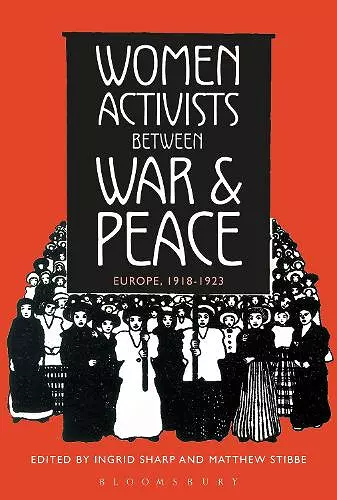Women Activists between War and Peace
Europe, 1918-1923
Professor Matthew Stibbe editor Professor Ingrid Sharp editor
Format:Paperback
Publisher:Bloomsbury Publishing PLC
Published:1st Nov '18
Currently unavailable, and unfortunately no date known when it will be back

An international cast of eminent scholars examine how women's movements and individual female activists helped to mould, interpret and communicate key developments in post First World War Europe.
Women Activists between War and Peace employs a comparative approach in exploring women’s political and social activism across the European continent in the years that followed the First World War. It brings together leading scholars in the field to discuss the contribution of women’s movements in, and individual female activists from, Austria, Bulgaria, Finland, France, Germany, Great Britain, Hungary, Russia and the United States. The book contains an introduction that helpfully outlines key concepts and broader, European-wide issues and concerns, such as peace, democracy and the role of the national and international in constructing the new, post-war political order. It then proceeds to examine the nature of women’s activism through the prism of five pivotal topics: * Suffrage and nationalism * Pacifism and internationalism * Revolution and socialism * Journalism and print media * War and the body A timeline and illustrations are also included in the book, along with a useful guide to further reading. This is a vitally important text for all students of women’s history, twentieth-century Europe and the legacy of the First World War.
This collection of essays opens a new window onto women's activism in post-WWI Europe by reaching beyond the boundaries of Western Europe to include the voices of women from Eastern Europe and the Scandinavian region. The essays included number only five, but they are a rich collaboration between and among scholars from a variety of historic fields. The contributors have mined new sources to analyze the roles of women activists in journalism, political movements, the pacifist movement, and women's citizenship rights; specifically, a woman's right to vote as well as her relationship with her own body as the physical and psychological traumas of war encroached on and forever modified understandings of "male" and "female." Consequently, these essay masterfully weave together women's postwar activism by viewing the sources through various lenses in order to examine the ways in which activism belied national boundaries and brought women together from disparate social, cultural, and geographic places to work toward a shared goal. Summing Up: Highly recommended. Upper-division undergraduates and above. * CHOICE *
A must-read on the significance of the women activists at local, national and supranational settings in the immediate aftermath of the First World War. It is equally illuminating on gender relations and men's attempts to stifle or support these women. The volume achieves something rare: the co-authorship offers geographical and thematic range but not at the expense of coherence, neither within nor between chapters. The result is moving, shocking and inspiring in equal measure. * Corinna Peniston-Bird, Senior Lecturer, Lancaster University, UK *
This is a remarkable and innovative approach to comparative women’s history. The multi-authored essays are particularly useful in helping us to analyse women’s post-war activism not only by considering the impact of internationalism versus particular national settings in a truly transnational perspective, but also by questioning paradigms of European women’s history through case studies of Eastern Europe, particularly Hungary . * Birgitta Bader-Zaar, Assistant Professor for Modern History, University of Vienna, Austria *
This collection of long multi-authored and multinational articles speaks to a perceived need for a closer look at what women activists of all political persuasions were up to in the turbulent years immediately following World War I. Comparative, in-depth analyses provide special insight into developments in the traumatized new nations (especially Hungary) that emerged from the former multi-ethnic empires of Germany, Austria-Hungary, and Russia. The women activists discussed in this volume ranged from feminists, pacifists, and socialists to nationalists, conservative Catholics, and proto-fascists; some became journalists, other politicians. Obtaining the vote for women did not mean that women's activism was henceforth unilaterally feminist; rather, it was fragment, multi-directional, continually constrained (but also provoked in some cases) by the political turmoil and geopolitical transitions that accompanied the reorganization of a war-torn Europe. I wish I had access to these thoughtful and beautifully-documented studies twenty years ago when I was writing European Feminism, 1700-1950. * Karen Offen, Senior Scholar, The Michelle R. Clayman Institute for Gender Research, Stanford University, USA *
This valuable collection of comparative, multi-authored essays demonstrates vividly how our understanding of European history can be enhanced, if not transformed, by investigating what women activists did and said, and how the relations of the sexes changed in consequence of the brutal war. * European History Quarterly *
ISBN: 9781472578778
Dimensions: unknown
Weight: 408g
288 pages